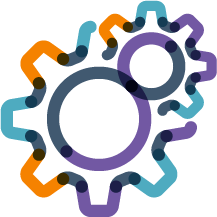Professional Scrum Competency: Understanding and Applying the Scrum Framework
 One of the first steps a Scrum practitioner should take is to learn about the Scrum framework. The Scrum Guide is the foundational body of knowledge for the Scrum framework. The Nexus Guide builds upon that foundation as the body of knowledge for the Nexus scaling framework.
One of the first steps a Scrum practitioner should take is to learn about the Scrum framework. The Scrum Guide is the foundational body of knowledge for the Scrum framework. The Nexus Guide builds upon that foundation as the body of knowledge for the Nexus scaling framework.
To help practitioners advance their use of Scrum, the Understanding and Applying the Scrum Framework dives deeper into Scrum theory and the Scrum framework. The Focus Areas in this Competency explore the purpose of each of these elements and provide practical advice on how to use Scrum to increase the effectiveness of individuals, teams and organizations.
Key Focus Areas
This competency has the following key focus areas:
Scaling
Scrum is designed to work at the team, product, and organization level. The practitioner will be able to apply Scrum in increasing levels of complexity and scale. They will be able to demonstrate when to scale and when not to scale and appreciate scaling practices and complementary frameworks that help organizations scale Scrum. The ultimate level of proficiency within this Focus Area is the ability to know what, and what not, to compromise in pursuit of a scaling approach by understanding the trade-offs and benefits of particular concepts and practices. Ultimately, the practitioner will demonstrate that they can scale Scrum and still keep its essential qualities of empiricism, self-organization, and continuous improvement. The practitioner should also be able to demonstrate the results of good scaling practices from both an organization and business perspective.